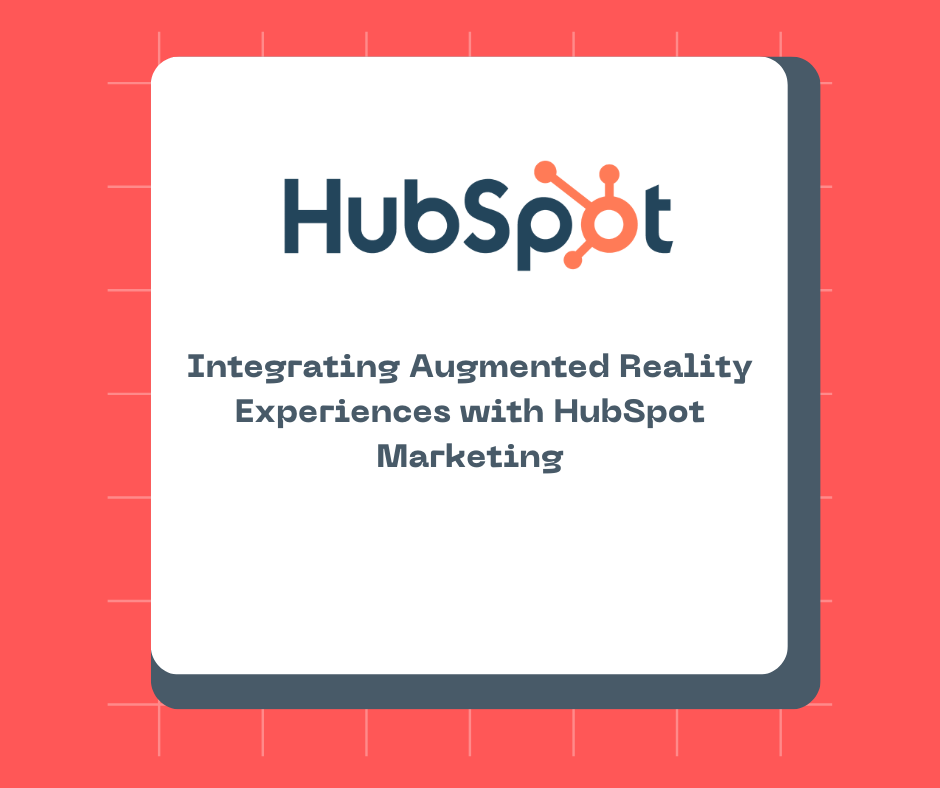In the rapidly evolving landscape of digital marketing, staying ahead of the curve is crucial for businesses aiming to capture and retain their audience's attention. One such innovative approach that has gained significant traction is the integration of augmented reality (AR) experiences with HubSpot marketing. Augmented reality, often abbreviated as AR, is a technology that overlays digital content onto the physical world, creating immersive and interactive experiences for users. HubSpot, on the other hand, is a powerful inbound marketing and sales software that helps businesses attract, engage, and delight customers. When combined, AR and HubSpot can revolutionize marketing strategies, providing brands with unique opportunities to engage their audience in memorable and impactful ways.
Augmented reality has already proven its potential across various industries, from gaming and entertainment to retail and education. However, its application in marketing has opened up new avenues for customer engagement and brand storytelling. By seamlessly integrating AR experiences with HubSpot marketing campaigns, businesses can create immersive brand experiences that resonate with their target audience on a deeper level.
One of the primary benefits of integrating AR experiences with HubSpot marketing is the ability to deliver personalized and interactive content. With HubSpot's robust customer relationship management (CRM) capabilities, businesses can gather valuable data about their audience's preferences, behaviors, and interests. By leveraging this data, marketers can create AR experiences tailored to individual users, delivering content that is relevant and engaging. Whether it's showcasing products in a virtual try-on experience or providing interactive tours of physical locations, personalized AR content can capture the attention of consumers and drive meaningful interactions.
Furthermore, AR experiences integrated with HubSpot marketing can enhance the customer journey by providing seamless transitions between online and offline channels. For example, a retail brand can use AR to allow customers to visualize how furniture or clothing items would look in their homes before making a purchase. By connecting these AR experiences with HubSpot's ecommerce functionality, businesses can streamline the purchasing process and drive conversions. Additionally, AR-powered interactive ads or product demos can drive traffic to physical stores, bridging the gap between online and offline shopping experiences.
Another compelling aspect of integrating AR experiences with HubSpot marketing is the ability to generate valuable insights and analytics. HubSpot's analytics tools provide marketers with detailed metrics on campaign performance, including engagement rates, conversion rates, and customer feedback. By tracking user interactions with AR content, businesses can gain valuable insights into how their audience engages with their brand, allowing them to refine their marketing strategies for better results. These insights can inform future AR campaigns, enabling businesses to continuously optimize their marketing efforts and drive greater ROI.
Moreover, integrating AR experiences with HubSpot marketing can help businesses differentiate themselves in crowded markets and stand out from the competition. In today's digital age, consumers are bombarded with an overwhelming amount of content and advertisements. By leveraging AR technology to create immersive and interactive experiences, brands can capture the attention of their audience and leave a lasting impression. Whether it's through gamified experiences, interactive storytelling, or virtual product demonstrations, AR allows businesses to create memorable brand experiences that cut through the noise and foster deeper connections with their audience.
In addition to enhancing customer engagement and driving conversions, integrating AR experiences with HubSpot marketing can also boost brand awareness and loyalty. By offering unique and innovative experiences, businesses can position themselves as forward-thinking and customer-centric brands. AR-powered marketing campaigns have the potential to generate buzz and word-of-mouth referrals, amplifying brand visibility and attracting new customers. Furthermore, by delivering personalized and immersive experiences, businesses can foster stronger emotional connections with their audience, leading to increased brand loyalty and advocacy.
Despite the numerous benefits of integrating AR experiences with HubSpot marketing, it's essential for businesses to approach implementation strategically and thoughtfully. Building successful AR campaigns requires careful planning, creative execution, and seamless integration with existing marketing strategies. Additionally, businesses must ensure that AR experiences align with their brand identity and values, providing value to their audience rather than being perceived as gimmicky or intrusive.
In conclusion, integrating augmented reality experiences with HubSpot marketing presents exciting opportunities for businesses to elevate their marketing strategies and engage their audience in new and innovative ways. By leveraging the power of AR technology alongside HubSpot's comprehensive marketing platform, businesses can deliver personalized, interactive, and memorable brand experiences that drive engagement, conversions, and brand loyalty. As AR continues to evolve and become more accessible, businesses that embrace this technology stand to gain a competitive edge in the ever-evolving landscape of digital marketing.
Schedule your training session here and comment “Need Training” on the request form.

Comments